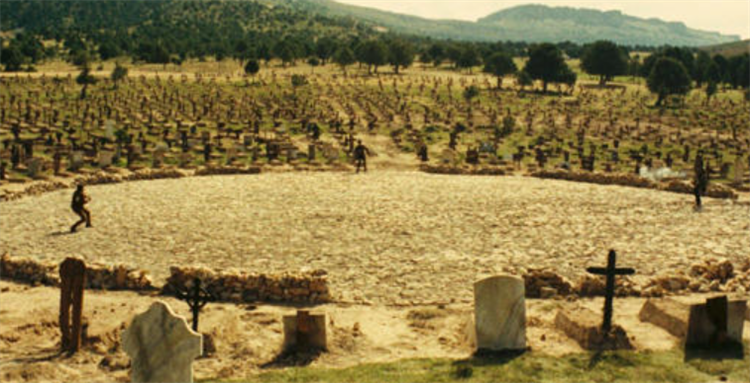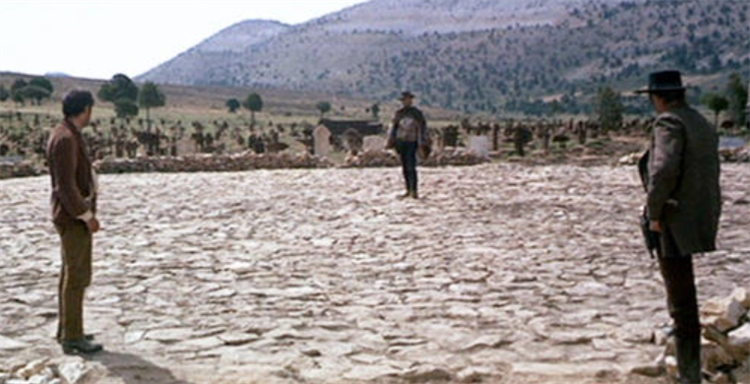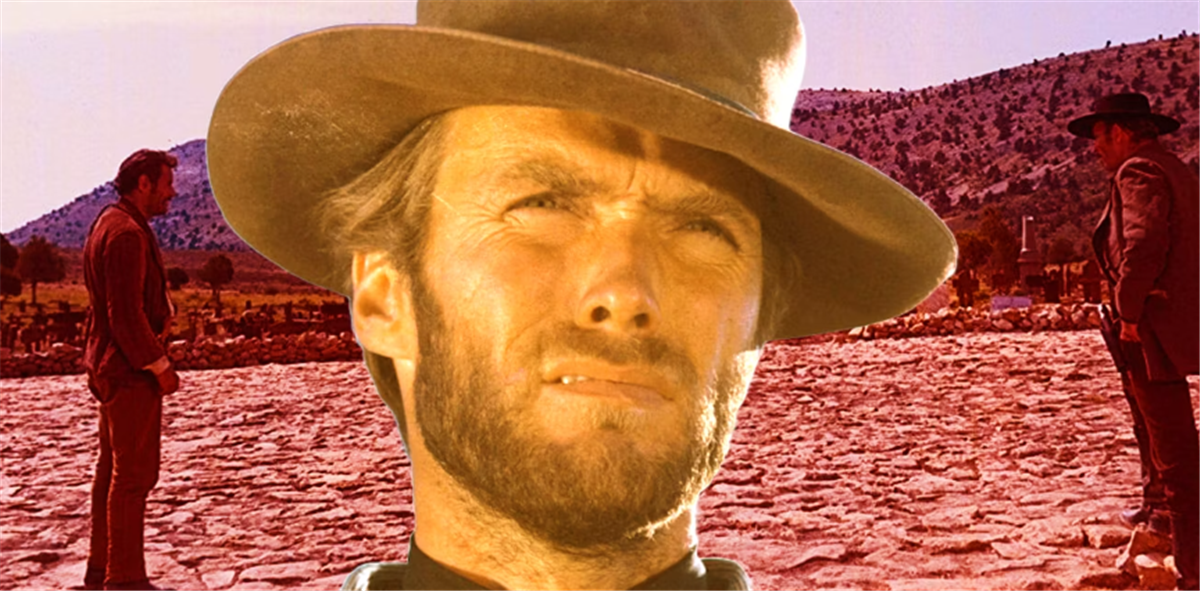While it has been nearly sixty years since The Good, The Bad & The Ugly was originally released, there are many good reasons that the movie is still considered the definitive Western 57 years later. The Good, The Bad & The Ugly saw director Sergio Leone collaborate with star Clint Eastwood in the third and final movie of the Dollars Trilogy. The series began with 1964’s A Fistful of Dollars and continued with 1965’s For A Few Dollars More, both of which imbued the standard Western formula with a more cartoony, playful style than viewers expected. Both movies also added a level of grit to comparatively clean-cut Hollywood Westerns.
As the Dollars Trilogy was a lot less simplistic than the average Western, Eastwood’s iconic Man with No Name was by no means an uncomplicated, straightforward hero. However, it was in The Good, The Bad & The Ugly that both the wild action set-pieces cooked up by Leone and the trilogy’s revolutionary sense of moral ambiguity truly came into their own. The Good, The Bad & The Ugly married Leone’s considerable visual style and gift for pacing with one of Eastwood’s most effortlessly charismatic performances, resulting in an all-time classic. As a result, the movie is still held up as a shining example of the genre and is considered the best Western ever.
The Good, The Bad & The Ugly Shifted Away From Traditional Western Movies
From its opening scene onwards, The Good, The Bad & The Ugly painted a picture of the Old West that was more morally gray than most Hollywood Westerns ever admitted. The movie’s brand caricatures ensure that no one could call Leone’s masterpiece realistic but, like Eastwood’s later revisionist Western Unforgiven, The Good, The Bad & The Ugly does complicate the simple morality of easier Westerns. While those movies were uncomplicated celebrations of American colonialism, The Good, The Bad & The Ugly is something smarter, darker, and more complex.
The Good, The Bad & Ugly Starred Clint Westwood During His Western Movie Prime
Clint Eastwood’s decades-spanning career has been defined by some impressive highs. However, he will always be best remembered as a Western hero and The Good, The Bad & The Ugly got the actor at his peak. Eastwood continued to work in the genre for decades afterward and made masterpieces like Pale Rider, Unforgiven, and The Outlaw Josey Whales after The Good, The Bad & The Ugly. However, Leone’s movie caught him at his most memorably charming.
The Good, The Bad & The Ugly Was An International Production
Filmed in Spain, set in America, and directed by an Italian, The Good, The Bad & Ugly brought together producers and actors from numerous countries to create a unique tone. Unlike earlier Spaghetti Westerns or Hollywood Westerns, The Good, The Bad & The Ugly had a tone entirely of its own. Leone was one of the best Western directors of all time precisely because his work wasn’t tethered to one country’s sensibilities unlike many of his contemporaries in both Italy and America.
The Good, The Bad & The Ugly’s Villain Is Iconic

Lee Van Cleef’s repugnant Angel Eyes is genuinely chilling, but the amoral character is also believable thanks to his human motivations. This only makes him more memorably nasty and ensures that it is easy to root for the movie’s flawed antiheroes. Where many Western villains of this era were racist stereotypes, cartoony antagonists, or thinly sketched stock characters, Angel Eyes is grounded, oddly charismatic, and unforgettably creepy in his cold, calculating way.
The Good, The Bad & The Ugly’s Real-Life History Resonates
The Good, The Bad & The Ugly condemns both the actions of the Confederate Army and the brutality of war itself, resulting in a timeless tale that shows the human cost of greed, avarice, and moral corruption. Where the likes of Gone With the Wind aged terribly thanks to their Confederate apologia, The Good, The Bad & The Ugly doesn’t glamorize the wanton bloodshed of war while also never excusing the horrors of slavery.
The Good, The Bad & The Ugly’s Cinematography Still Stuns
The Good, The Bad & The Ugly is one of the most visually sumptuous entries into the Western genre, despite all the bloodshed. The stunning Spanish vistas, parched deserts, and sweeping cinematography ensure that this Western earns the descriptor “Epic,” and this beautiful backdrop contrasts effectively with the petty, nasty machinations of the main characters.
The Good, The Bad & The Ugly’s Knotty Plot Makes Sense
Although it feels like there is an endless array of double crosses, The Good, The Bad & The Ugly’s story is very easy to keep track of upon a re-watch. This proves pivotal when the movie’s runtime is so daunting. Eastwood’s Dollars Trilogy antihero didn’t need a name to win over viewers when Angel Eyes was clearly a more monstrous figure than him, and Eli Wallach’s opportunistic deuteragonist Tuco had an easy time gaining audience goodwill when The Good, The Bad & The Ugly’s plot so often dropped him in nightmarish circumstances.
The Good, The Bad & The Ugly’s Meta-Humor Was Ahead of Its Time

Jokes like Tuco telling a would-be assassin not to monologue before shooting him influenced the subversive, self-aware screenwriting that modern blockbusters popularized in the decades that followed. While these gags are comparatively subtle, they still shaped the winking, self-reflexive sense of humor that screenwriters like Shane Black later came to rely on. Where movies like Rio Bravo did have moments of comic relief, these classic Westerns rarely tapped on the fourth wall the way that Leone and company did in The Good, The Bad & The Ugly.
The Good, The Bad & The Ugly Is Funnier Than You Remember
The banter between Tuco and The Man With No Name, the Looney Tunes-inspired action set-pieces, and the smirking fourth-wall breaks all make The Good, The Bad & The Ugly feel far shorter than its almost three-hour runtime. The earlier movies of the Dollars Trilogy were nowhere near as long, but The Good, The Bad & The Ugly pulled off its lengthy duration thanks to its inspired humor. Even among all its violence, Leone’s movie never feels bleak or hopeless.
The Good, The Bad & The Ugly Still Has Heart
Unlike Sam Peckinpah’s The Wild Bunch, a similarly unglamorous deconstruction of Western tropes, The Good, The Bad & The Ugly is a fun, funny adventure story despite all its dark elements. The scene between Tuco and his brother shows that there is a human heart under all the gore and grit, unlike some heavier, nastier additions to the genre. The Good, The Bad & The Ugly wanted the audience to root for its antiheroes and succeeded in winning viewers over, marrying the cynicism of revisionist Westerns with the pure crowd-pleasing fun of classic Hollywood Westerns. In the process, The Good, The Bad & The Ugly became the best Western movie ever made.
